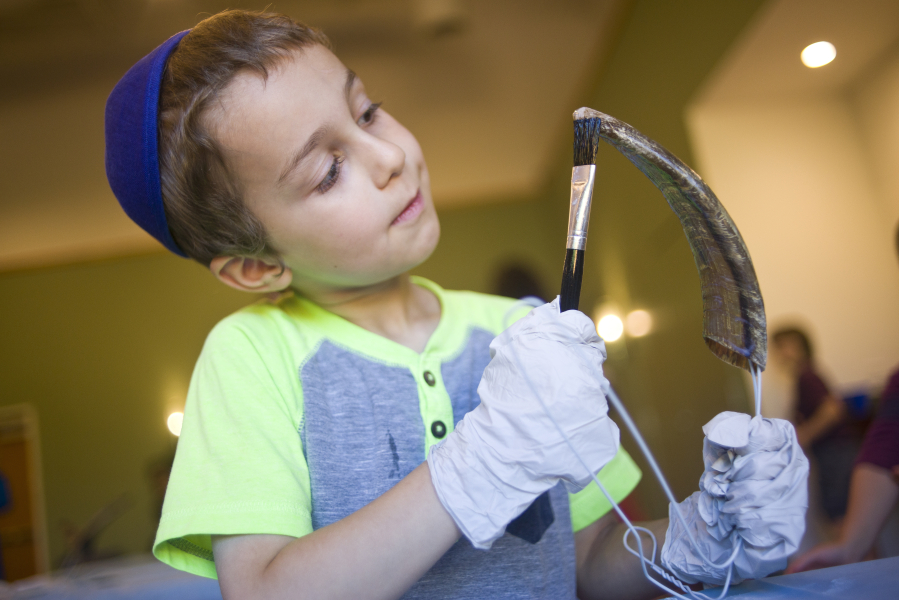After drilling a hole in the end of a severed ram’s horn, Rabbi Shmulik Greenberg held the horn to his mouth and blew, sending a puff of dust out the other side. He used another drill bit to widen the hole and blew through it again, creating a horn-like sound.
No longer was it just a ram’s horn. It had become a shofar.
Upon hearing the sound, the crowd of about 50 people watching the rabbi cheered and clapped Sunday afternoon during the Chabad Jewish Center’s Shofar Factory Holiday Workshop. The shofar, which is blown during some Jewish observances, will sound at the center during the celebration of Rosh Hashanah, which begins Oct. 2 at sundown.
Rosh Hashanah is the Jewish new year. Greenberg explained that blowing the shofar on the holiday reminds God to consider the congregation as he plans the upcoming year.
“We remind God that we would like to have a good and sweet year,” he said.
Greenberg gave the group a brief presentation about the holiday and shofars, including information about the different types of animal horns used to make them. Ram, goat and kudu horns are common. Bull and bison horns can be used as a last resort, he said. Sometimes, gazelle horns are used.
After the tip of the horn is removed and a hole is drilled through to the hollow, larger part of the horn, the shofar is beautified. To demonstrate this, Greenberg gave participants, many of them children, their own shofars to sand and shellac. They also got to take their shofars home.
The rabbi said that the best way for children to learn about the holiday is to participate in its traditions.
And now, “they have their own shofar,” he added. “There cannot be a better reminder about the holiday.”
The shofars even can be a toy for the kids, as they practice using it. That’s what Greenberg did when he was a child.
It was 10-year-old Noah Graven’s first time working on a shofar. The Vancouver boy said he learned a lot Sunday, including how to make one and the various types of animal horns that could be used. “I thought it only came from the ram,” he said.
He planned to hang his in his room until it dried, then use it.
Eden Stokey of Vancouver and her 5-year-old son, Evan, also had never made a shofar. Evan focused on smoothing out his horn with a piece of sandpaper.
“My son especially loves to hear the shofar,” Stokey said, so she thought the event would be fun for him. He previously attended the Jewish preschool next door, and the family has tried out other activities at the center, including pickle making.
The shofar will sound Oct. 3 at the Chabad Jewish Center, 9604 N.E. 126th Ave., for a Rosh Hashanah celebration and dinner beginning at 5:30 p.m., Greenberg said. To reserve a place, visit the center’s website, www.jewishclarkcounty.com.




